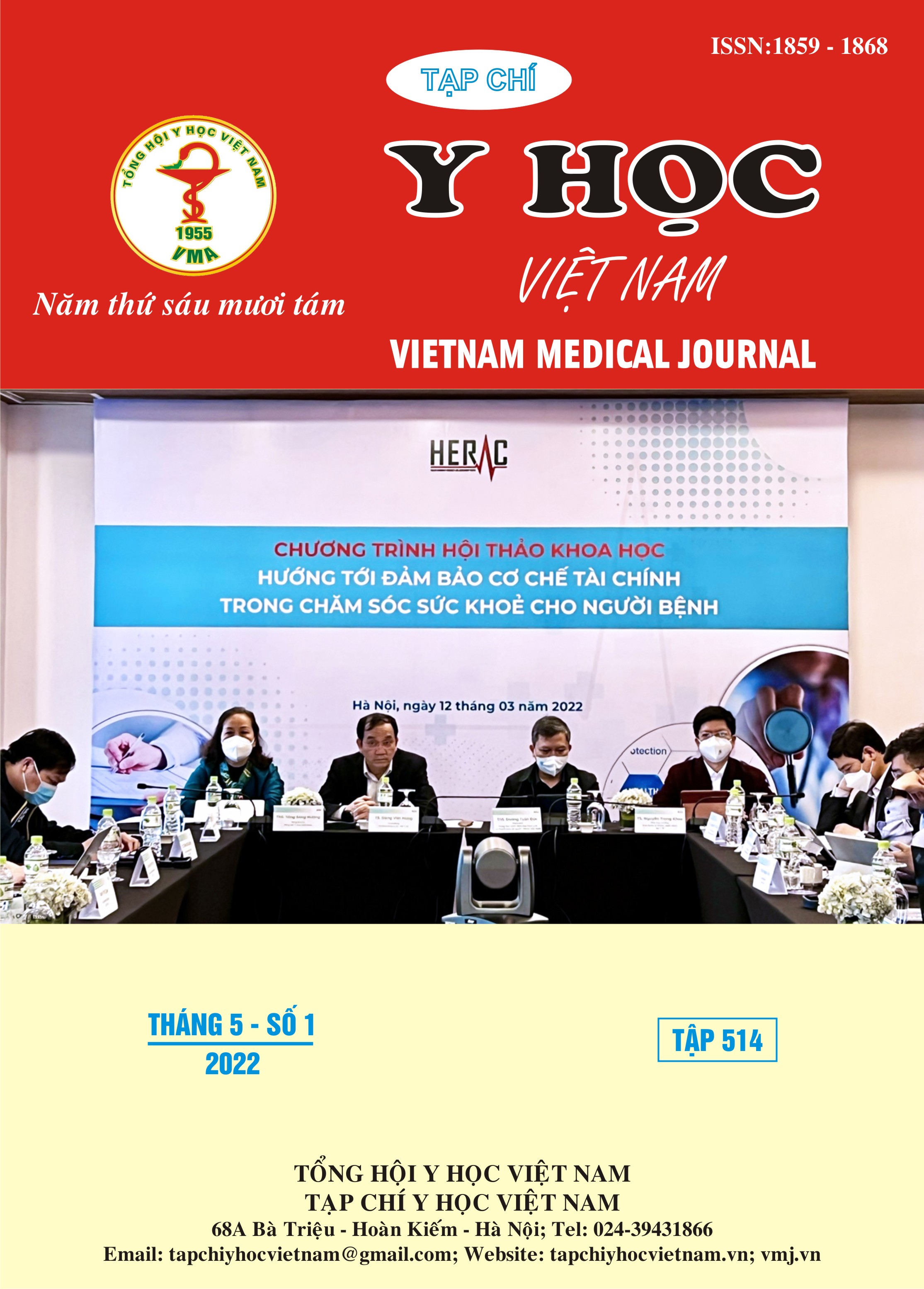PREVALENCE OF GROUP B STREPTOCOCCUS AND SOME RELATED FACTORS IN PREGNANT WOMEN
Main Article Content
Abstract
Objectives: The purpose of this study was to determine the rate of group B streptococcal infection and some related factors in pregnant women from 34-36 weeks at Hanoi Obstetrics and Gynecology Hospital and determine the susceptibility of some antibiotics for group B streptococcus. Methods: We performed a cross-sectional descriptive study on 220 pregnant women at Hanoi Obstetrics and Gynecology Hospital. Pregnancy with gestational age from 34-36 weeks would be sampled products in two locations: the outer third of the vagina and the rectum. Specimens were sent to the Department of Microbiology within 3 hours of sampling to isolate and identify bacteria. Pregnancy infected with group B streptococcus would be given an antibiogram, then treated and monitored for labor according to regulations. Results: The rate of group B streptococcus infection in pregnant women with gestational age from 34-36 weeks during the study period was 13,2%. In the group with a history of miscarriage, a history of miscarriage had a risk of group B streptococcal infection 4,36 times higher than the group with no history of miscarriage (OR=4,36, 95% CI : 1,3-13,2). The rate of group B streptococcus in the group of pregnancy douching accounted for 40% higher than the group without this hygiene habit, this difference was statistically significant (p<0,05). The sensitivity of Penicillin, Ampicillin, Augmentin, Ceftriaxone, Cefotaxime, Cefuroxime was 86,21%, 79,31%, 89,66%, 65,52%, 65,52%, 72,41%, respectively. Group B streptococcus sensitivity to Vancomycin and Linezolid was 72,41% and 89,66%, respectively. Conclusions: The prevalence of group B streptococcus infection among pregnant women with gestational age from 34-36 weeks at Hanoi Obstetrics and Gynecology Hospital was 13,2%. Two factors, history of miscarriage and vaginal douching, increased the risk of group B streptococcus infection by 3,9 and 5,7 times, respectively, compared with the group without this history. The antibiotic sensitivity of group B streptococcus to Penicillin and Ampicillin was still relatively high and these were still the two preferred antibiotics for prophylactic use in pregnancy infected with group B streptococcus.
Article Details
Keywords
group B streptococcus, pregnant women, antibiotic sensitivity
References
2. Center for Disease Control Prevention (2002), «Prevention of perinatal group B streptococcal disease : revised guidelines from CDC», Morb Mortal Wkly Rep, 2002.
3. Frohlicher S, Reichen-Fahrni G, Muler M et al (2014), «Serotype distribution and antimicrobial susceptibility of group B streptococci in pregnant women : results from a Swiss tertiary centre », Swiss Med Wkly, Vol 144, 2014, p135-139.
4. Hillier SL (1993), « Diagnostic microbiology of bacterial vaginosis», Am J Obstet Gynecol 169, p455-458.
5. Panda B, Iruretagoyena I, Stiller R (2009), «Antibiotic resistance and penicillin tolerance in ano-vaginal group B streptococcl», J Matem Fetal Neonate Med. 2009 Feb ; 22(2) :111-114.


